
Curator’s statement
Tunisia’s history is deep and rich. Carthage, near Tunis, was established by the Phoenicians in 814 BCE and was a major hub of their empire for hundreds of years. Later it was conquered by the Romans, followed by Vandals, Byzantines and Arabs. The influence of these cultures can be seen everywhere. In the North, you’ll find numerous well-preserved archaeological sites from all these empires. In the South, the Sahara Desert is still home to many Berbers, descendants of the original settlers of the area. Many of these Berber villages will be familiar to Star Wars fans, as several of the films were made here. No matter where you are, you will feel the warm and gracious hospitality of the Tunisian people.
The Fora Difference
Book with Ann to access exclusive perks and experiences on your trip.
Killer perks
Free upgrades, spa credits and more—we got you
Personalized recs
Customized travel planning for your style
Insider knowledge
Expert advice from people who’ve actually been there
Where to stay
Unlock perks by contacting Ann to book your trip.
Day 1: Sidi Bou Said
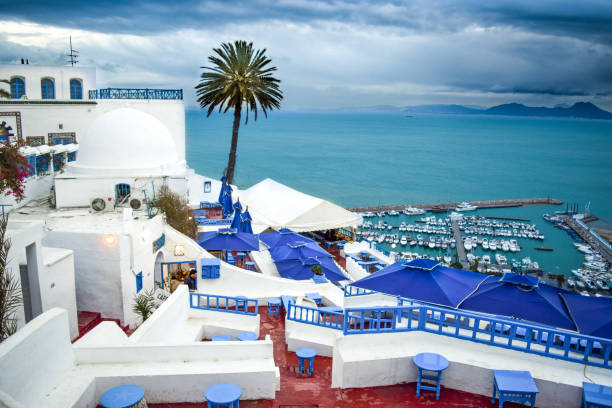
Get lost exploring the alleys of Sidi Bou Said, a charming seaside town known for its blue and white houses and cobbled streets. Be sure to linger at the al fresco cafes and small art galleries.
Save room for dessert. Bambalouni has best beignets ever (sorry New Orleans, it’s true). Just head to the top of the walk-street and look for the stall with the long line outside.
Visit Baron d’Erlanger’s house. Dar Ennejma Ezzahra, (“The Star of Venus”), is a beautiful 1920s era home with a vast collection of musical instruments from North Africa. He is the one to thank for the Greek Isle look of Sidi Bou Said as he paid to have the entire town painted in white and blue. Many years later, Sidi Bou Said became a UNESCO World Heritage site, thus the town’s unique look is preserved.
Day 2: Carthage & American Cemetery
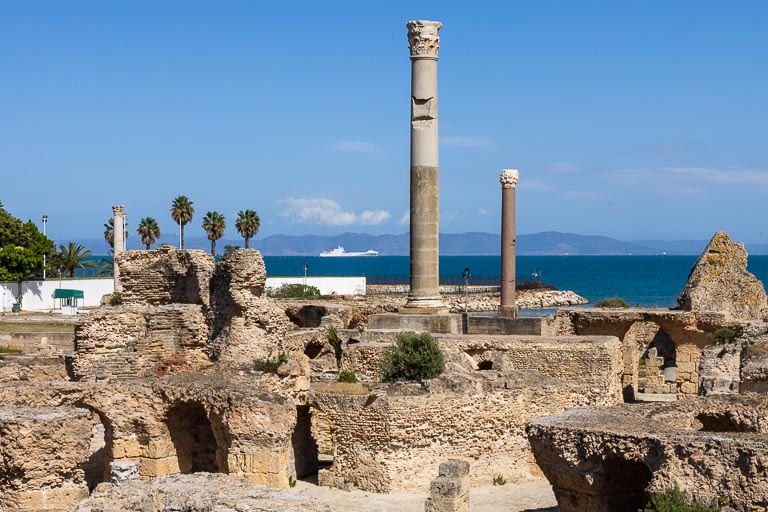
Learn about the ancient culture of Carthage, one of the largest cities in preindustrial history. Being a major city, it has lots of ruins to explore, including the baths, villas, port, forum, amphitheater, and aqueduct. Transportation (taxi or van) is needed between most of the sites. As with all historical sites, I recommend a guide who will give you the story behind the decaying rocks.
Visit the American Cemetery to understand the United States’ involvement in the North African Campaign of the Second World War.
Day 3: Dougga
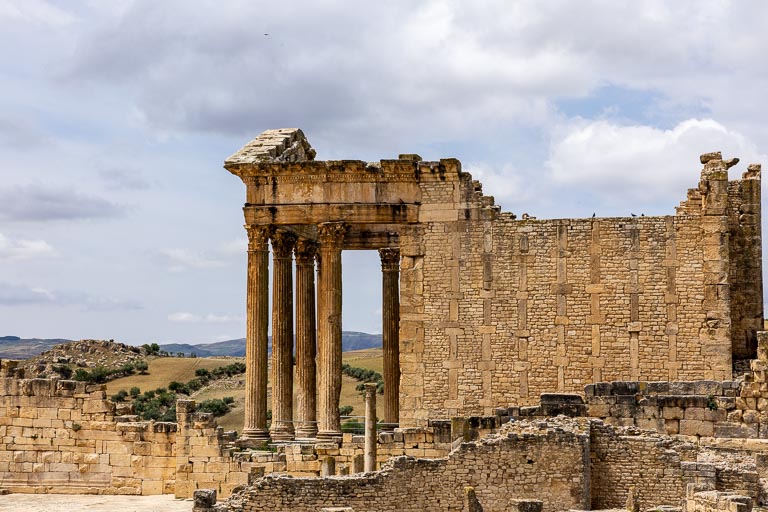
Head off on your driving tour - Tour Dougga, one of the best-preserved Roman towns in Africa, perched above the fertile valley of Oued Khalled. Your guide will walk you down main street, to the market and the temple. As you circle back, you’ll tour the well-preserved Roman villas before ending up at the public baths.
Stop off at Zaghouan, the water source for Carthage, to see its Water Temple.
Overnight in Kairouan.
Day 4: Kairouan
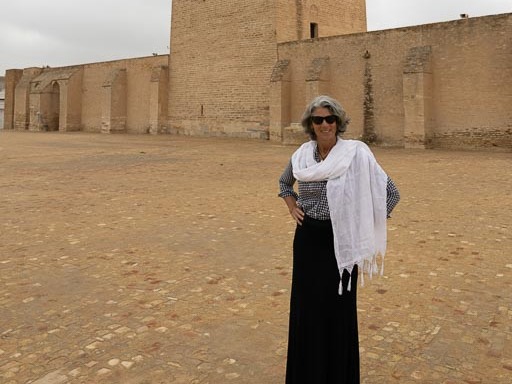
Gain insight into the Arabic history of Tunisia. Kairouan’s rich architectural heritage includes the Great Mosque, with its marble and porphyry columns, and Mosque Siki Sahbi (“Mosque of the Barber”), with intricate stone carvings and tiles. Kairouan is Maghreb’s principal holy city. For Muslims, seven trips here are said to equal one hajj to Mecca.
Overnight in Tozeur
Day 5: Atlas Mountains
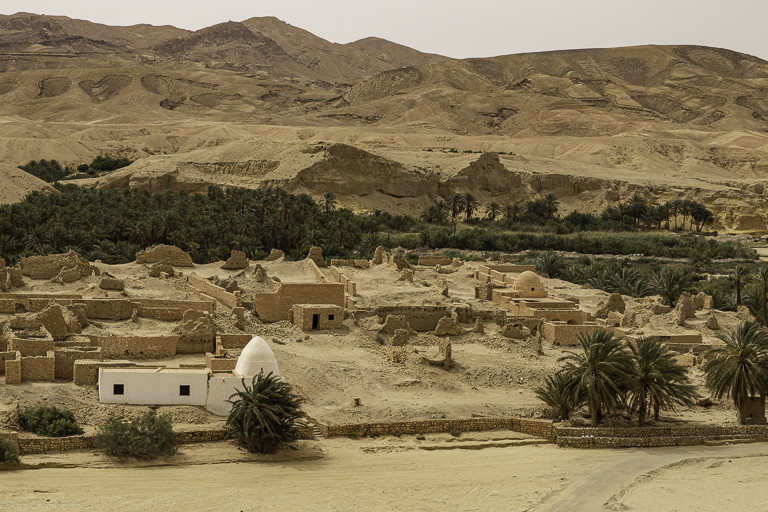
Walk through the oases of Chebika, Tamerza, and Mides in the Atlas Mountains, see the local fauna and Berber homes. Have a Berber Pizza, made fresh for you in a cave dwelling.
Take selfies at Star Wars’ Mos Espa and Ong Jemal. The landscape was a perfect background for the spaceport settlement on Tatooine.
Engage with a local. It is said that the heart of Tunisia is in Tozeur. Learn what it was like to live in Tunisia at the Sidi Ben Aissa Archaeological and Traditional Museum in Tozeur’s Medina.
Ride in a horse-drawn buggy to Tozeur Oasis and tour a small farm. It’s remarkable how many types of crops are grown in this hot desert.
Day 6: Glamping in the Desert
Ride a camel to your desert camp. Secluded from town, you’ll watch the sunset over the sand dunes and sit around the firepit admiring the milky way. You’ll sleep in a spacious tent with lots of blankets.
Overnight glamping in the desert.
Day 7: Troglodytes and Star Wars
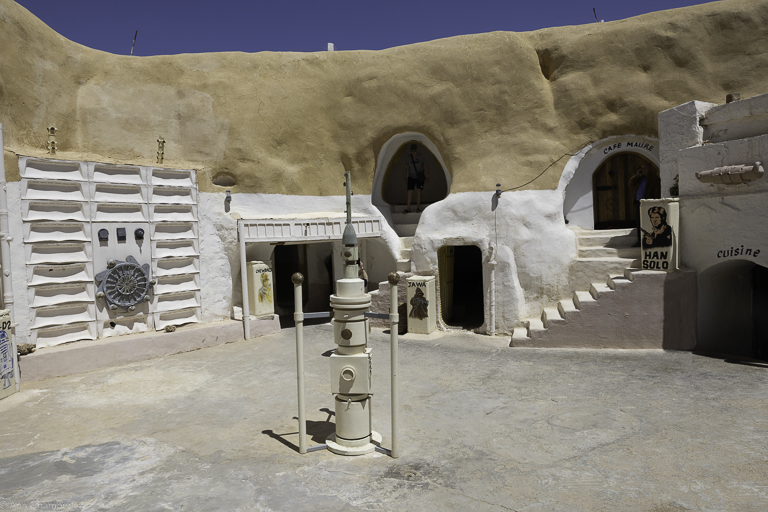
Visit a Berber family living in a Troglodyte dwelling and see how they live, sleep, cook and eat. You can even help them grind wheat. Then visit Tamezret and Matmata villages, where some houses are built up from the ground and others are built into the ground.
Explore Sidi Driss, a filming site for the original Star Wars and the hotel were the crew stayed. George Lucas has come a long way – now he can afford to rent out the entire hotel for just himself.
Overnight in Matmata.
Day 8: Berbers in the South
Learn more about Berber cultures at Toujane and Chenini as you stroll through these hilltop towns that date back to the 12th century. When you reach the church at the top of Chenini, order a coffee at the café and enjoy the view of the steep valleys the Berbers had to defend.
Visit more Star Wars sites, including Ksar Medenine (the granary) and Ksar Haddada, where you can enjoy an excellent lunch. (Nearby is a town from where many people move to France to become chefs. When they retire, they return here. Such is the story of the chef at Ksar Haddada.)
Overnight in Gabes
Day 9: The Roman Amphitheater of El Jem and Sousse
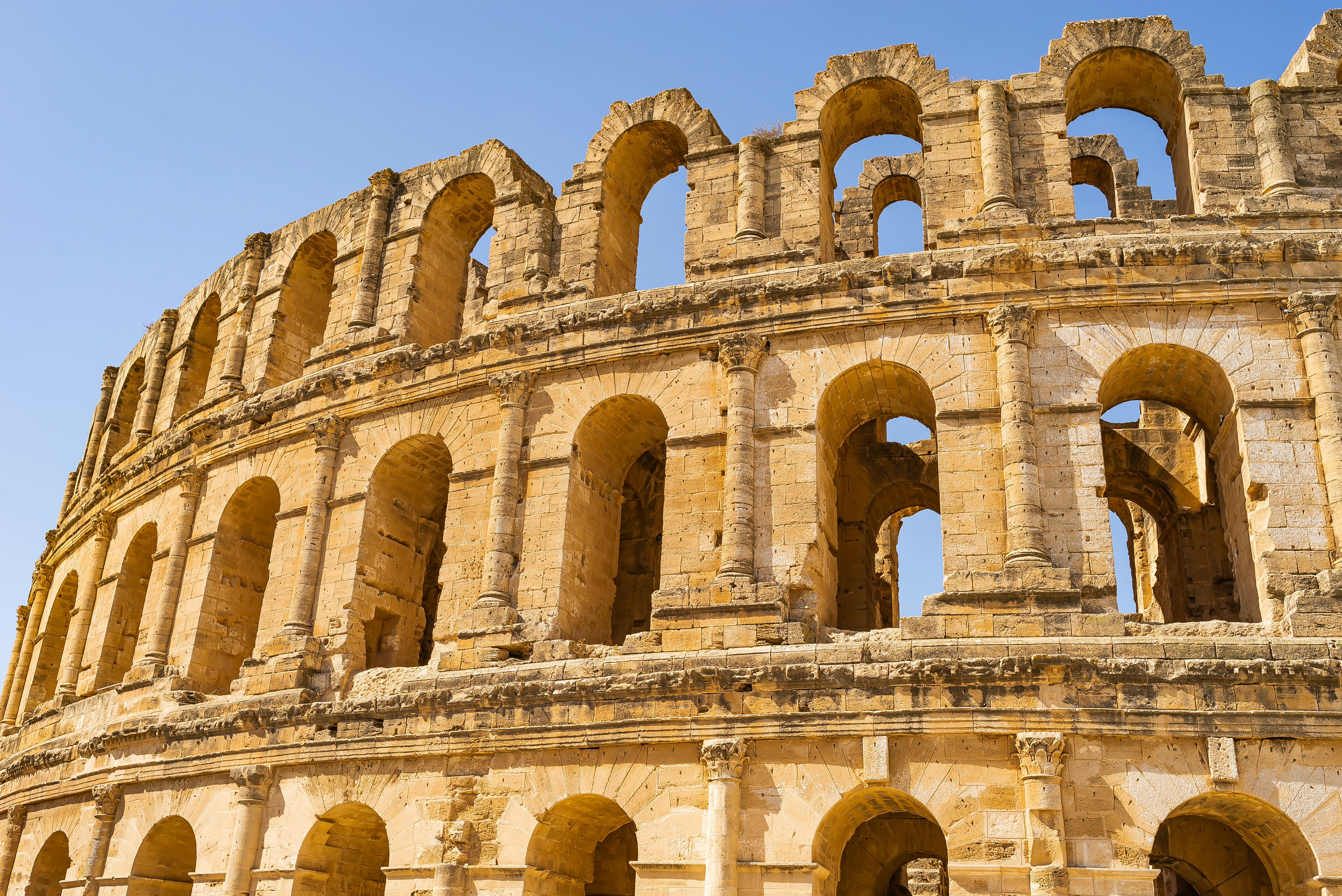
Admire the Amphitheatre of El Jem, one of the best-preserved Roman ruins in the world. It was built entirely out of stone blocks and is supported by a complex system of arches. It doesn’t have a foundation.
Stroll through Sousse’s cobled streets and Medina. Take note of the architecture while looking for last minute gifts to bring home.
Take in the beach scene and nightlife in Sousse, where Europeans come for their sun holidays. This is your chance to dance the night away.
Overnight in Sousse.
Day 10: Farewell
Wonder through Monastir, exploring the old quarter, Bourguiba Mausoleum and Ribat Fortress – which has been guarding the waterfront for a thousand years.
Return to Tunis or transfer to the airport.
Need to know
If you want to rest up before heading home, add a couple of days at Tunisia’s world-famous beaches. Check out my Djerba Beach Travel guide for more.
Private guides in Tunisia are very valuable as they provide context for the sites you’ll visit as well as insight to the culture. In addition, they will do all the driving. I recommend booking a guide and using a Fora Advisor to book the hotels.
Tunisia’s tourism industry has primarily been focused on hosting Europeans on the coast for sun holidays in the spring and fall. Sharing the architectural and cultural aspect is new. As such the hotels, restaurants and transportation are comfortable, but not luxurious. If you like to be an “early explorer,” this experience is for you.

Travel Advisor
Ann Chamberlin

Get in touch with Ann
Did you like this guide? Reach out to customize and book your own experience. Or, just to chat about travel in general.
You can expect a response from Ann within 1–2 business days. You’ll also be subscribed to our traveler newsletter (you can unsubscribe at any time).
This trip report is part of our ongoing series on travel to Tunisia. In need of further inspiration? Check out my guide, Discover the Best of Djerba, Tunisia: Beaches, Sun, Local Crafts, and Star Wars Attractions.